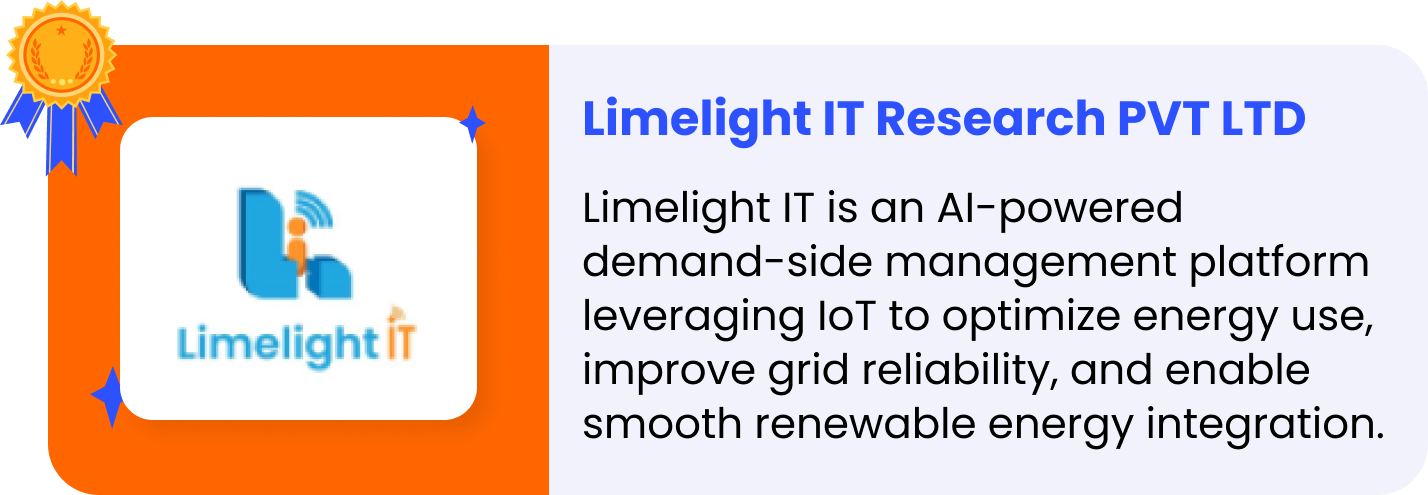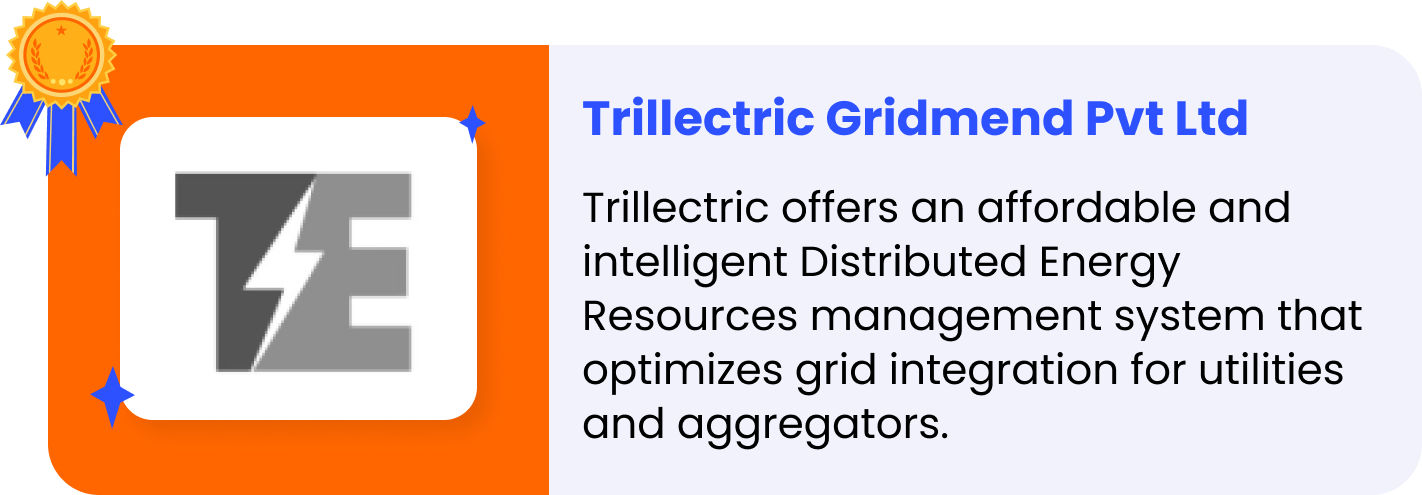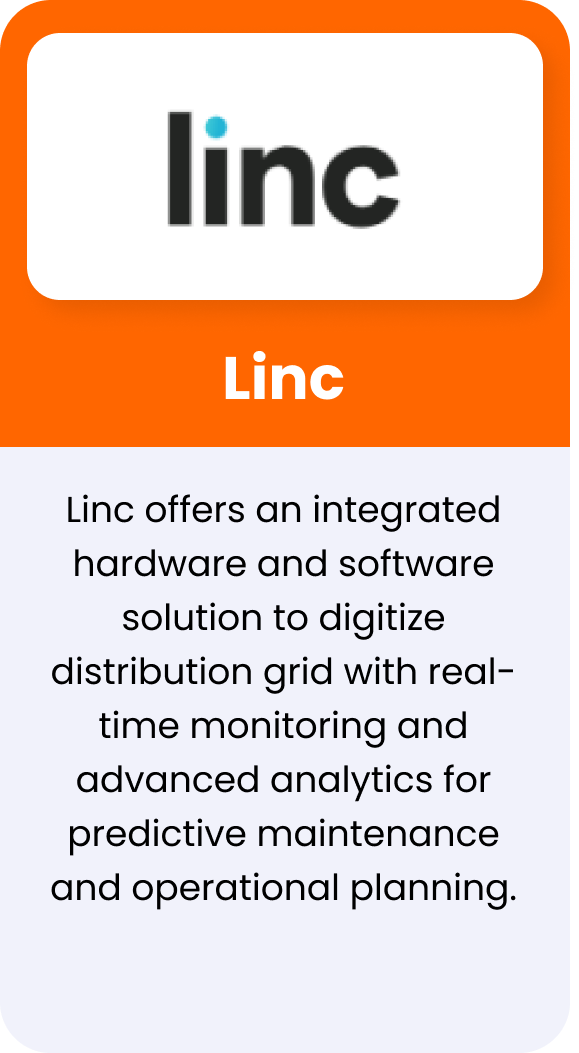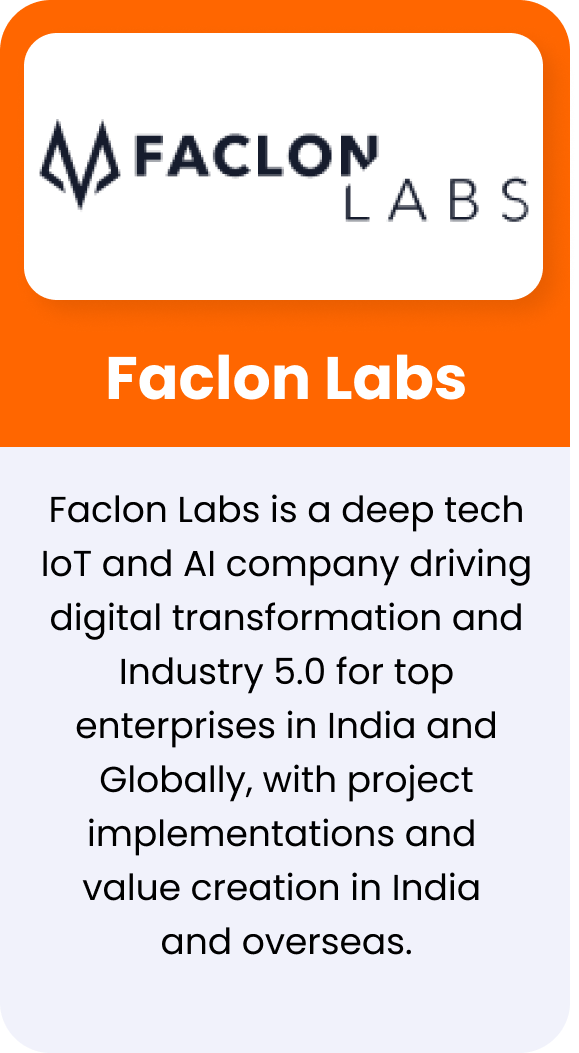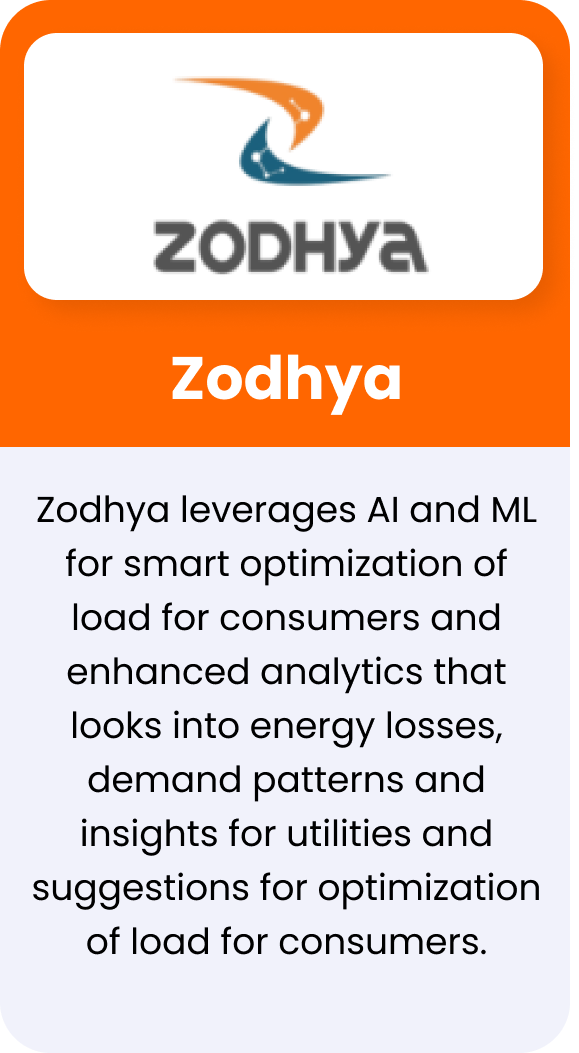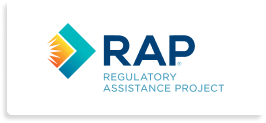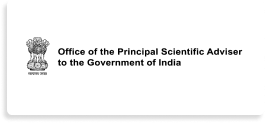-
- Program
- Events
- Case Studies
- Startup Hub
- FAQs
- About Us WooCommerce not Found
- Newsletter
ElectronVibe 2024
An open innovation challenge for which we identify a set of problem statements faced
by multiple Indian electric utilities, and then undertake an open call to select mature power sector
startups that have innovative solutions that address the problem statements.
Time left to apply
Days
Hours
Minutes
Seconds
Problem Statements
The problem statements have been arrived at by taking a consultative approach via a series of
discussions with Indian electric utilities along with other stakeholders in the power sector.

Addressing Grid Reliability and Safety Challenges in the Face of Environmental Threats and Renewable Energy Integration
What is the Problem?
The reliability of the grid is under threat due to increasingly harsh weather conditions, such as storms and floods, necessitating timely precautions and predictions to mitigate potential damage. Furthermore, despite data being collected from multiple sources, the isolation of this data poses challenges in gaining actionable insights, particularly in network maintenance. The direct injection of renewable energy into the grid presents a safety risk, compounded by the ad-hoc development of last-mile networks (LV) which results in unbalanced LV networks. This imbalance across phases leads to poor asset utilization, higher losses, increased neutral currents, harmonic imbalances, and fluctuations in power quality. Furthermore, the emergence of electric vehicles (EVs) and solar cells introduces additional challenges, such as harmonic imbalances. Addressing these multifaceted issues is crucial to ensure the reliability, safety, and efficiency of the grid amidst evolving environmental conditions and increasing renewable energy integration.
Enhancing Efficiency and Decision-Making in Asset Management through Integrated Digitization
What is the Problem?
Indian electric utilities face challenges in integrating field equipment with backend systems and maintaining accurate geo-tagging of assets. Delays in updating mapping information in backend systems after field team modifications often hinder operational efficiency. Additionally, the lack of mapping for small auxiliary devices complicates asset management processes further.
To address these challenges, organizations require digitization solutions that streamline processes and enhance efficiency. Furthermore, the analysis of data from various devices, including SCADA, GIS, and IoT sensors, proves to be a challenge due to their isolated usage. Collating and utilizing this data effectively for decision-making and actionable insights remains a significant hurdle.
Moreover, the implementation of health monitoring systems for assets presents an opportunity for innovation and digitization. Scheduled notifications for servicing equipment could significantly improve asset management practices over time.
By addressing these issues, organizations can optimize asset management processes, improve operational efficiency, and leverage data for informed decision-making, ultimately enhancing overall performance and reliability.
Leveraging Existing Consumption Data for Electric Utilities and Consumers Alike
What is the Problem?
While smart meters and IoT devices offer a wealth of data on consumer energy use, a critical challenge exists. Utilities face challenges in leveraging this data effectively for grid management and consumer engagement Consumers themselves lack access to user-friendly insights to optimize their consumption, identify potential issues, and participate securely in online bill payments. A comprehensive solution is needed that empowers both parties: consumers with unimpeded access to their data, actionable insights, and robust security; and utilities with advanced data analytics tools, consumer engagement features, and enhanced security infrastructure. This will foster a more informed and collaborative energy ecosystem, leading to cost savings, increased efficiency, reduced fraud risk, and a sustainable future.
Mature power sector startups from India (and potentially, globally) would develop and submit
business-cases based on their viable and scalable solutions, in response to the defined problem
statements above. Such solutions could include (an illustrative and non-comprehensive list):
AI and ML solutions for Advanced Predictive Analytics – To analyze data from various sources including weather forecasts, sensor networks, and historical grid performance data. These algorithms can predict potential grid vulnerabilities and help utilities take proactive measures to mitigate risks before they escalate during harsh weather conditions.
Grid Monitoring and Control Systems – Advanced monitoring and control systems that provide real-time insights into grid conditions, including voltage fluctuations, current imbalances, and harmonic distortions. These systems can enable utilities to identify and address safety risks associated with the integration of renewable energy sources and the adoption of electric vehicles.
Distributed Energy Resource Management Systems (DERMS) – Platforms that optimize the integration of renewable energy sources, energy storage systems, and demand response programs into the grid. DERMS can help balance supply and demand in real time, mitigate grid imbalances, and improve overall grid reliability and efficiency.
Energy Storage Solutions – Modular storage solutions that can operate independently or in coordination with the main grid, especially during emergencies. Energy storage with advanced control systems can enhance grid resilience, providing localized backup power during outages, and leverage renewable energy generation sources in front and behind the meter.
Cybersecurity – Robust cybersecurity solutions to protect smart grid infrastructure from cyber threats and attacks. Implementing end-to-end encryption, intrusion detection systems, and secure authentication mechanisms can safeguard grid operations and prevent disruptions caused by malicious actors.
Grid Modernization Technologies – Develop innovative grid modernization technologies such as smart sensors, intelligent switches, and self-healing networks. These technologies can enhance grid resilience, optimize asset utilization, and improve overall operational efficiency, particularly in last-mile networks (LV).
Augmented Reality (AR) for Asset Inspection and Maintenance– AR technology for asset inspection and maintenance tasks, providing field technicians with real-time guidance and visualization overlays. AR can improve the efficiency and accuracy of asset inspections, reducing human errors and enhancing overall asset management practices.
Blockchain Solutions for Asset Management Systems– Blockchain-based systems for secure and transparent asset management, ensuring data integrity and traceability throughout the asset lifecycle. Blockchain technology can streamline asset transactions, such as transfers and maintenance records, improving overall efficiency and reliability.
IoT-enabled Asset Monitoring Systems – IoT-enabled monitoring systems that continuously track asset health and performance metrics in real time. These systems can detect anomalies and predict potential failures, enabling organizations to take preventive actions and optimize asset performance.
Asset Mapping and Visualization Tools– Tools that provide interactive maps and visualizations of assets, including small auxiliary devices. These tools should allow users to easily identify and locate assets, improving asset management efficiency and decision-making.
Data Integration and Analytics Platforms– Platforms that integrate data from various devices such as SCADA, GIS, and IoT sensors, and provide advanced analytics capabilities. These platforms should enable organizations to collate and analyze data effectively, deriving actionable insights for informed decision-making.
Consumer-Facing Energy Management Apps– User-friendly mobile applications that provide consumers with access to their energy consumption data in real-time. These apps should offer personalized insights, tips for energy optimization, and alerts for abnormal usage patterns, empowering consumers to make informed decisions about their energy consumption.
Data Analytics Platforms for Utilities– advanced data analytics platforms for utilities to analyze consumption data from smart meters and IoT devices. These platforms should utilize machine learning algorithms to identify consumption patterns, forecast demand, and optimize grid management strategies, improving overall efficiency and reliability.
Energy Data Visualization platforms– platforms for interactive dashboards that visualize consumption data and key performance indicators for both consumers and utilities. These dashboards should be customizable, intuitive to use, and accessible on multiple devices, facilitating data-driven decision-making and collaboration.

What’s in it for you?
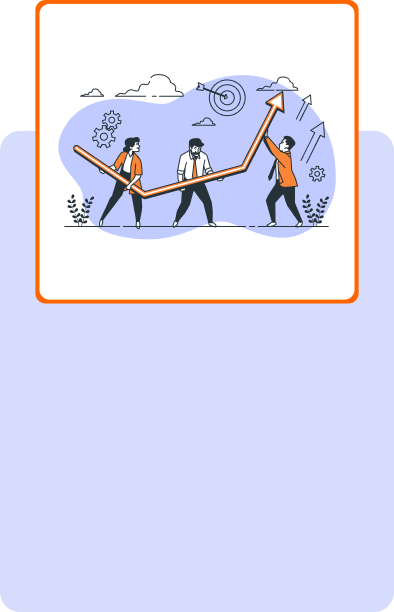
Gain Domain Experience
Understand the power sector, and how to work with Indian electric utilities, by learning directly from industry experts via a structured training program (delivered via weekly webinars).

Networking
Opportunity to interact with a wide range of mature power sector startups and mentors. You will have regular access to our program partners with diverse expertise in the power sector.

Opportunity to Engage
Throughout the program, there will be opportunities to meet with power sector & Indian electric utility professionals, and engage with them to potentially secure a post-program pilot.
TIMELINE

ElectronVibe 2024 Cohort
JURY AND MENTORS
The jury and mentors for ElectronVibe 2024 are made up of a handful of power sector experts, utility officers that will actively participate in the program

- Abhishek Nath, Sector Head - Energy and Power - CSTEP
- Birendra Choudhary, Deputy General Manager (IT) - Noida Power Company Limited
- Mahesh Patankar, Founder and Managing Director - MP Ensystems
- Shurjeel Ghani Lala, Superintending Engineer, Kashmir Power Distribution Company Limited (KPDCL)
- Sunil Sharma, General Manager - Sustainability & Cleantech - BSES Yamuna Power Limited
- Abhishek Nath, Sector Head - Energy and Power - CSTEP
- Dhruvak Aggarwal, Program Lead - Power Markets - CEEW
- Dipak Thakkar, Managing Director - EnergyPro Insights, ex-Torrent Power
- Jaideep Saraswat, Associate Director - Vasudha Foundation
- Mohan Singh, Deputy General Manager - Automation - Noida Power Company Limited
- Rohit Shukla, Senior Manager - Noida Power Company Limited
- Sanket Srivastava, Head - Power Management - Noida Power Company Limited
- Sunil Sharma, General Manager - Sustainability & Cleantech - BSES Yamuna Power Limited
- Umang Maheshwari, Director - Solution Deployment - GEAPP
- Vijaykanth P, Deputy General Manager - Loss Control - Noida Power Company Limited
- Vrinda Sarda, Associate Director - Vasudha Foundation
- Birendra Choudhary, Deputy General Manager (IT) - Noida Power Company Limited
- Dipak Thakkar, Managing Director - EnergyPro Insights, ex-Torrent Power
- Lalit Shah, Chief Project Manager & Safety Officer - Tata Power DDL
- Mahesh Patankar, Founder and Managing Director - MP Ensystems
- Mainpal Bhola, Sustainability and Clean Technology - BSES Yamuna Power Limited
More to be announced shortly...

